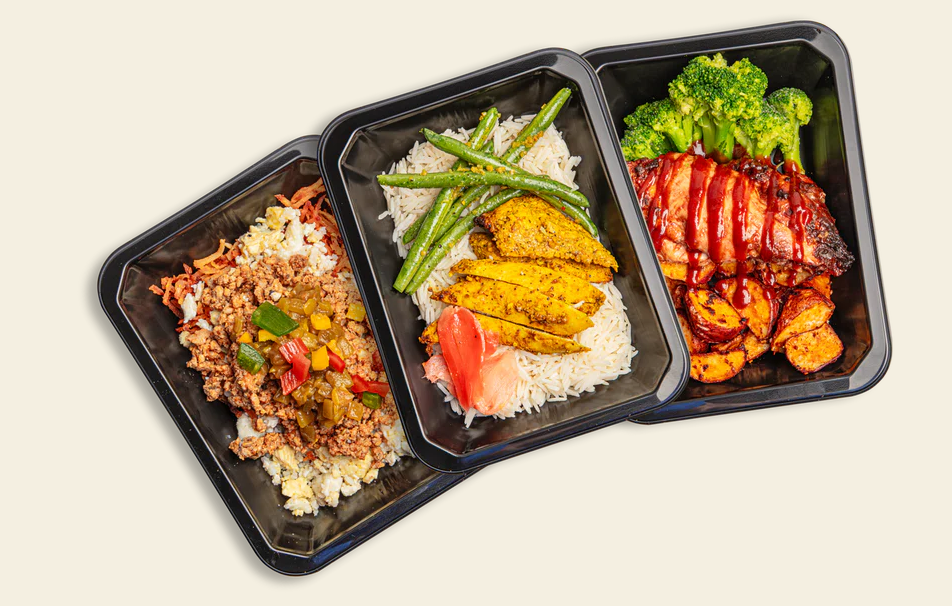Have you ever found yourself perusing the supermarket aisles, squinting at the fine print on the back of a food package, lost in a sea of numbers and jargon? In this guide, you’ll find a closer look at food labels and ways to demystify the nutritional facts that inform every daily meal.
Whether you’re trying to learn more about what’s in your healthy prepared meals or wandering through your local grocery store, it’s important to know which vitamins and nutrients you’re eating and which ones you need to get more of in your diet.
Get the most out of your weekly menu by learning how to read food labels today.
Why Does Reading Food Labels Matter?
Have you ever heard the phrase “you are what you eat”? What people put into their bodies is crucial to their overall health and well-being. By understanding how to decipher food labels, you gain the power to make informed choices about the fuel you’re putting into your system.
Whether you’re aiming to boost your energy levels, maintain a healthy weight, or simply feel better from the inside out, reading food labels is your first step toward achieving your health goals. The more informed you are, the more you can make the decisions that support your health goals.
Decoding the Numbers
Food labels are often a numbers game. Serving sizes and calorie counts can seem like a maze of random information. The good news is that they’re simpler to read than you think. Serving sizes provide the basis for all the nutritional values listed on the label.
Understanding these recommended portions is key to managing your intake. On the other hand, calories give you a snapshot of the energy content in a single serving. While they’re not the whole story, keeping an eye on your calorie intake can help you maintain a balanced diet.
Healthy fats, carbohydrates, and proteins also have sections on food labels. Fats are vital for brain function and cell growth. Carbs are your body’s primary source of energy. Proteins help build and repair tissues. By knowing the numbers and understanding what they represent, you’re well on your way to making informed food choices.
What’s in Your Food?
The ingredients list is the heart and soul of any food label. Don’t be fooled by the sleek packaging or enticing marketing claims; the ingredients list tells the real story.
Watch out for hidden sugars, sneaky additives, and unpronounceable compounds. Differentiate between whole foods, which are minimally processed and nutrient-rich, and processed ingredients that may lack essential nutrients.
The Art of Spotting Nutrition Claims
Nutrition claims like “low-fat,” “sugar-free,” and “organic” can sometimes seem like golden tickets to healthy eating. But here’s the scoop: not all that glitters is gold. Marketing tactics play a significant role in how products are perceived, but it’s up to you to decipher fact from fiction.
Dive deeper beyond the attractive packaging and look for concrete evidence to support these claims. Understanding the subtleties of nutrition claims empowers you to make choices that align with your health goals.
Tips for Effective Label Reading
So, you’ve mastered the basics of food labels, but how can you take your label-reading game to the next level? Use the 5/20 rule as your guide: aim for nutrients where 5% Daily Value (DV) or less is low, while 20% DV or more is high.
Keep an eye out for red flags like excessive sugar, sodium, or saturated fats. Most importantly, don’t be fooled by fancy packaging — always look at the details on the back of the label for the real story.
Navigating food labels can be a minefield for anyone with allergies or specific dietary needs. It’s important to spot common allergens like nuts, gluten, or dairy hidden within food products for your safety and the safety of others. Look for bolded allergen warnings and scan the ingredients list meticulously.
If you’re following a specific diet, such as vegetarian, vegan, or gluten-free, be vigilant about what you put into your shopping cart. When in doubt, contact customer service or choose trusted brands known for catering to dietary restrictions.
Your Path to Informed Eating
Congratulations, label-reading champions! You’ve embarked on a journey to demystify the nutritional facts that shape our eating habits. By understanding how to read food labels effectively, you’ve taken a giant leap toward healthier eating habits and a more conscious approach to what you consume.
Remember, you have the power to make informed choices that support your overall well-being. As you continue your quest for better nutrition and a healthier lifestyle, don’t hesitate to explore resources like healthy prepared meals for convenient options that align with your health goals.
Arm yourself with knowledge, stay curious, and never underestimate the impact of informed food choices on your body and mind. Here’s to a healthier, happier you!





